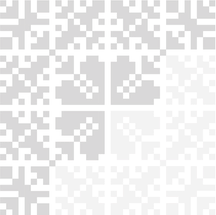C7 M2 L1 Grammar
7 | Modul 2: Gramatika
Put pod noge
7 | 2 | Lekcija 1: Prijevozna sredstva
| Riding on Transportation - Instrumental case
In this lesson you saw that, when expressing the idea of going somewhere by [a car], Croatian uses a construction with the Instrumental case:
| From our dialogues:
Laura: Želim putovati avionom, ali… ipak mislim da ću putovati autobusom. |
Matija: Ovaj put nećemo autobusom. Mislim da je bolje ići autom. |
With Someone | When expressing the idea that you are traveling with someone, you need to use the preposition “s” – like in the example: Putujem s bratom (I travel with [my] brother). |
By Means of Something | When expressing the idea of traveling with/by a certain form of transportation, there is no preposition involved, but you still use the Instrumental case: Putujem brodom (I travel by boat). |
| Motion verb Accusative or Instrumental Case
We need to distinguish two sets of questions/answers when it comes to traveling and transportation.
Kamo ideš? Idem na vlak. | The question ‘Where do you go? / Where are you going?’ - implies asking for information about where someone is going. In this example, the answer implies that a person is going to catch a train. |
Čime ideš? Idem vlakom. | The question here implies asking for information about the means by which someone is traveling. In this example, the answer implies that a person is going somewhere by train. |
As you can see, in this situation the case ending really matters! Besides movement which expresses where to, there is another situation in which we need to distinguish the use of the Accusative vs Instrumental case. This involves the verb voziti (se) - to drive (oneself).
Što voziš? Vozim automobil. | If we use the transitive verb voziti (to drive), then we need to use the Accusative case - Vozim automobil. (I drive [my] car.) |
Čime se voziš? Vozim se automobilom. | If we use the reflexive verb voziti se (to drive in), then we need to use the Instrumental case - Vozim se automobilom. (I’m in the car.) |
| Adjectives - Comparative forms
skup | jeftin | brz | spor |
lijep | ružan | nov | star |
There are several endings that are used to create the comparative form of an adjective. So far you have learned two of them: dobar - bolji (good - better) and lijep - ljepši (nice - nicer). What type of ending we need to use to create a comparative depends on the adjective itself. We will talk more about these rules in later units. For now, let’s focus on a few adjectives that we encountered in this lesson and how to make their comparative forms.
Adjective form | Comparative form | Example |
skup | skuplji | Crveni automobil je skuplji nego plavi. |
jeftin | jeftiniji | Plavi automobil je jeftiniji nego crveni. |
spor | sporiji | Parni vlak je sporiji. |
nov | noviji | Bijeli čamac je noviji. |
star | stariji | Ovaj čamac je stariji nego bijeli čamac. |
ružan | ružniji | Žuti avion je ružniji. |
brz | brži | Japanski vlak je brži nego hrvatski vlak. |
lijep | ljepši | Veliki avion je ljepši nego mali avion. |
Images used in this document are from these sources.












